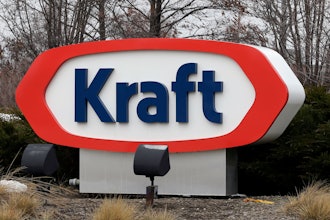Nearly every company has under- or non-performing assets – obsolete or excess inventory, items that didn’t sell well or were overproduced, under-utilized plant capacity, unwanted real estate. Such assets typically don’t have sufficient cash value to meet book or wholesale value. This results in inventory write-offs, write-downs or inventory reserves.
ALSO SEE: Effectively Improve Operational Efficiency for Food and Beverage Manufacturers
Unfortunately, the solution for most companies is to contact a few liquidators and get the best price for such assets, which is typically only ten to 40 percent of book value.
When a company doesn’t liquidate its under- or non-performing assets, a number of problems arise:
- Reduced profits: Unwanted inventory leads to reduced profit margins in most instances. Companies usually wind up putting excess items on clearance to induce buyers to purchase them at lower costs. Some companies even sell extra inventory at prices below what they paid for them.
- Waste: Excess inventory that perishes or whose date has expired frequently simply gets thrown out. Reducing wasted inventory is critical for cost control and profitability.
- Storage costs: The additional space used for storage of excess inventory means less floor space for selling. Plus, companies have to pay for utilities and the salaries of employees who move the inventory in and out of storage and manage it.
- Space problems: Unwanted inventory takes up floor space and prevents a company from offering newer products that appeal to customers. When excess inventory of an out-of-style or older product lingers, it restricts opportunities to design, produce and sell better products.
An alternative method for dealing with unwanted assets
There is a powerful alternative increasingly being used to deal with under- or non-performing assets: corporate barter. Corporate barter is the exchange of goods and services for corporate assets on a non-cash basis through the use of trade credits. Barter can be used to recover value from an asset that has lost some or most of its value.
Companies with excess inventory use barter for five main reasons:
- They receive a much higher value for their unwanted inventory when compared to cash liquidation pricing.
- They are protected from redistribution of problem assets into competing channels, which is common when such assets are disposed of through liquidators.
- They reduce the amount of cash needed to pay for competitively bid goods and services.
- Costly and unnecessary carrying costs of under- and non-performing assets are eliminated.
- To take advantage of potentially favorable tax treatment for non-liquidation sales.
How corporate barter works
The barter process begins with a company identifying an unwanted asset – one that does not have sufficient cash value to avoid negative accounting issues. The company then identifies and quantifies trade credit usage areas – that is, what competitively bid purchases can be targeted for trade credit usage and how much trade credit can be expected in the transaction. Media (e.g., TV or radio commercial air time or print or digital advertising space) has heretofore been the barter instrument of choice.
Once the asset/inventory has been identified and trade areas established, the seller’s corporate barter company provides a bona fide, non-qualified purchase offer – typically three to four times the cash liquidation value. The selling company then moves its unwanted inventory to its barter company in exchange for trade credits. The inventory is in turn sold by the barter company to a buyer with agreed upon restrictions. These restrictions might pertain to limiting redistribution of the assets to certain geographic areas – or to certain accounts (e.g., noncompetitive businesses); or inappropriate selling environments such as discount or second-hand outlets.
The selling company then uses the trade credits, in place of cash, to pay for the previously identified purchases.
From a tax standpoint, barter income is treated the same as cash income. The IRS measures bartered exchanges by using the market price of the goods or services someone receives. In a swap, both parties have to list the market value of what they received as taxable income. Taxes are not paid until such time as the trade credit is actually used as payment with suppliers.
Logistics emerges as an attractive barter instrument
As previously mentioned, media/advertising trade credits are the most commonly used credits in a barter transaction. However, for many companies – particularly those with limited or no media budgets – a powerful new area for barter is emerging: logistics barter.
Similar to media barter, logistics barter credits can be used to partially pay virtually all areas of logistics: ocean/air freight, less than truckload (LTL), full truck, intermodal, drayage, warehousing and distribution and reverse logistics. Nearly every company requires some form of logistics to do business, so logistics barter can be a very attractive means of disposing of unwanted assets.
Benefits of trading as opposed to cash liquidation
With the growth in the use of corporate barter, the paradigm for dealing with unwanted assets is evolving. The benefits of trade credits over cash liquidation are readily apparent:
- The trade partner pays a premium price for value-impaired, unwanted inventory of all types – typically three to four times the cash liquidation value.
- Purchased assets are contractually agreed to be redistributed into noncompeting markets.
- Sale is immediate and trade credit is available upon signing. In the case of logistics barter, trade credits can be used to lower shipping costs.
- Cash needs are reduced.
- Space for excess inventory and storage costs are both reduced – as is waste from excess inventory that perishes or whose date has expired.
- Corporate profits are maximized.
So, if you are considering using a liquidator to dispose of your under- or non-performing assets, explore corporate barter. Your company will benefit by realizing a higher value for your inventory, eliminating costly carrying costs, gaining tax benefits and improving cash flow, providing a positive impact on your company’s financial performance.
About the author
Nicholas Isasi is Executive Vice President for DM Transportation based in Boyertown, Pa. (www.dmtrans.com). The company provides vendor inbound, drop shipment and supply-chain management services to companies in a number of industries. Isasi has more than 20 years’ experience in carrier negotiations, supply chain management and corporate level logistics planning.























